Challenge 14: The last of the High Key triads (4)
This triad is very close to the previous one, but with this difference, we can get darker colors without getting very dark blacks.
The advantage of the Triads "High Key "is that they are transparent and produce bright colors. Their disadvantage is that you can not create a lot of contrast with them in a watercolor. Certainly, it is a handicap if we limit ourselves to these 3 colors, but by adding a blue or dark red one can face this problem.
For this last Triad "High Key 4" I used:
- Yellow Azo: PY151 (Good alternative to Aureoline Yellow)
- Quinacridone Magenta: PR202 (Same name as Blockx but other pigment composition)
- Manganese blue: PB15 (Less green than Daler & Rowney and darker)
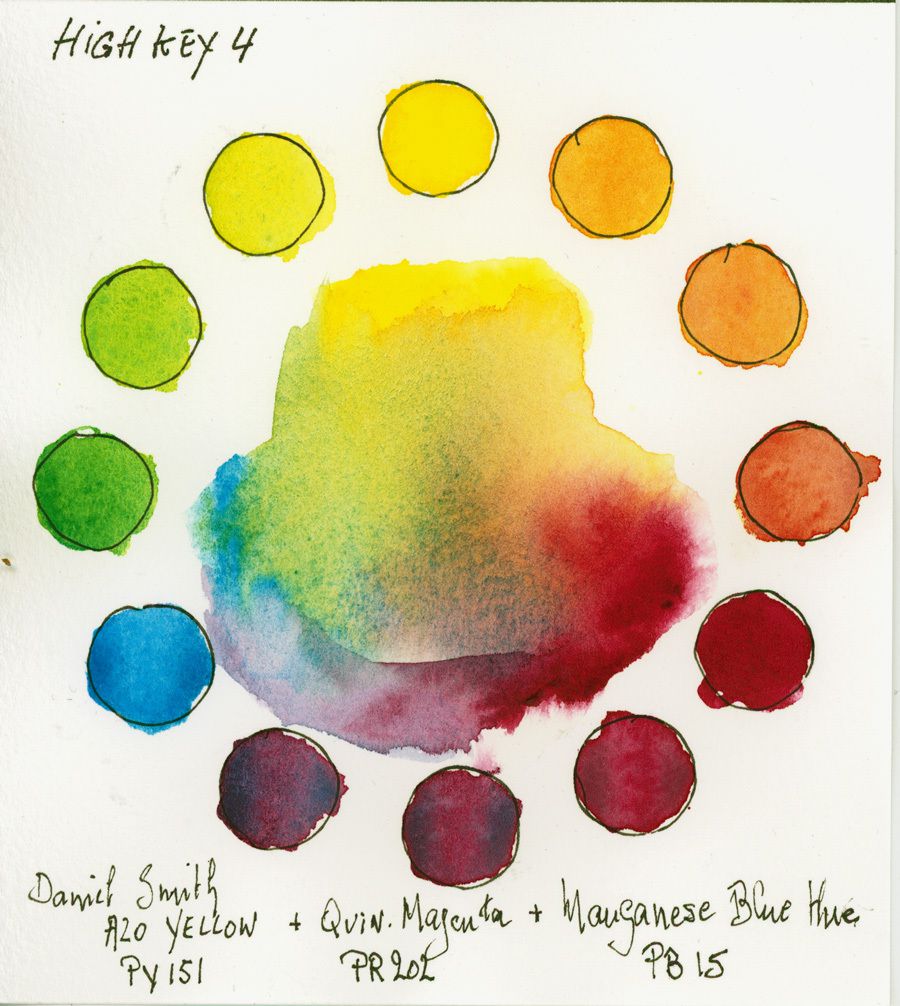
The mixes behave like those with the Triad High Key, but we see that the blue and magenta are slightly denser and produce more pronounced shadows.
In yellow mixture and Magenta, we observe that orange and red are less bright than with the previous Triad. This gives tones closer to the colors called "Earths", more neutral and duller.
Mixes of blue with magenta produce beautiful neutral blue, purple, lavender and mauve, but darker than with the triad High Key 3.
The blue-yellow mixture produces less natural greens than with the previous triad, so you have to add a little bit of red to the mix to create shades of natural green.
As for the mixture of three colors, we observe that we obtain neutrals well defined and if there is a dominant, and Umber and Siena like hue that are very natural (without granulation and very transparent), but it is very difficult to obtain a completely neutral shade.

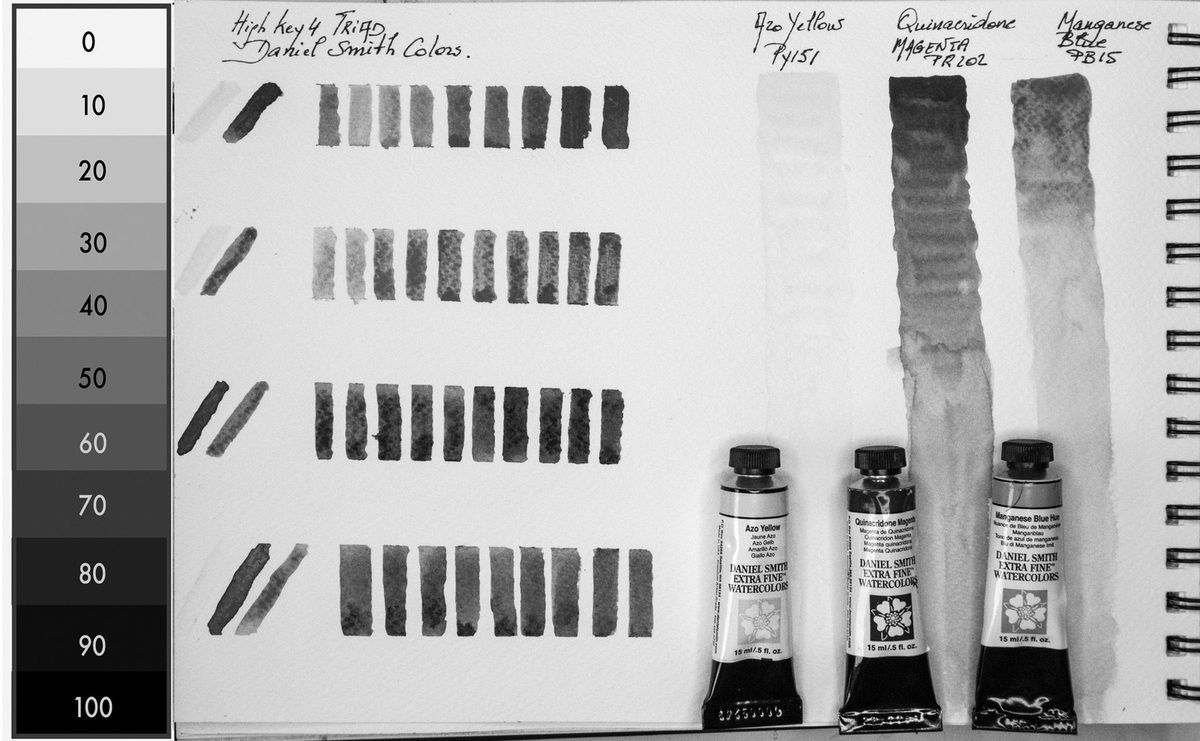
As I have blue tits nesting under the roof of my house and they are already at their second nest, I had the opportunity to well observe. These small birds, so active and so tender colors, are an ideal subject to be painted with this subtle triad. So I show you the 3 most relevant stages of this painting :
First I painted the shadows and darks of a mixture of blue and magenta
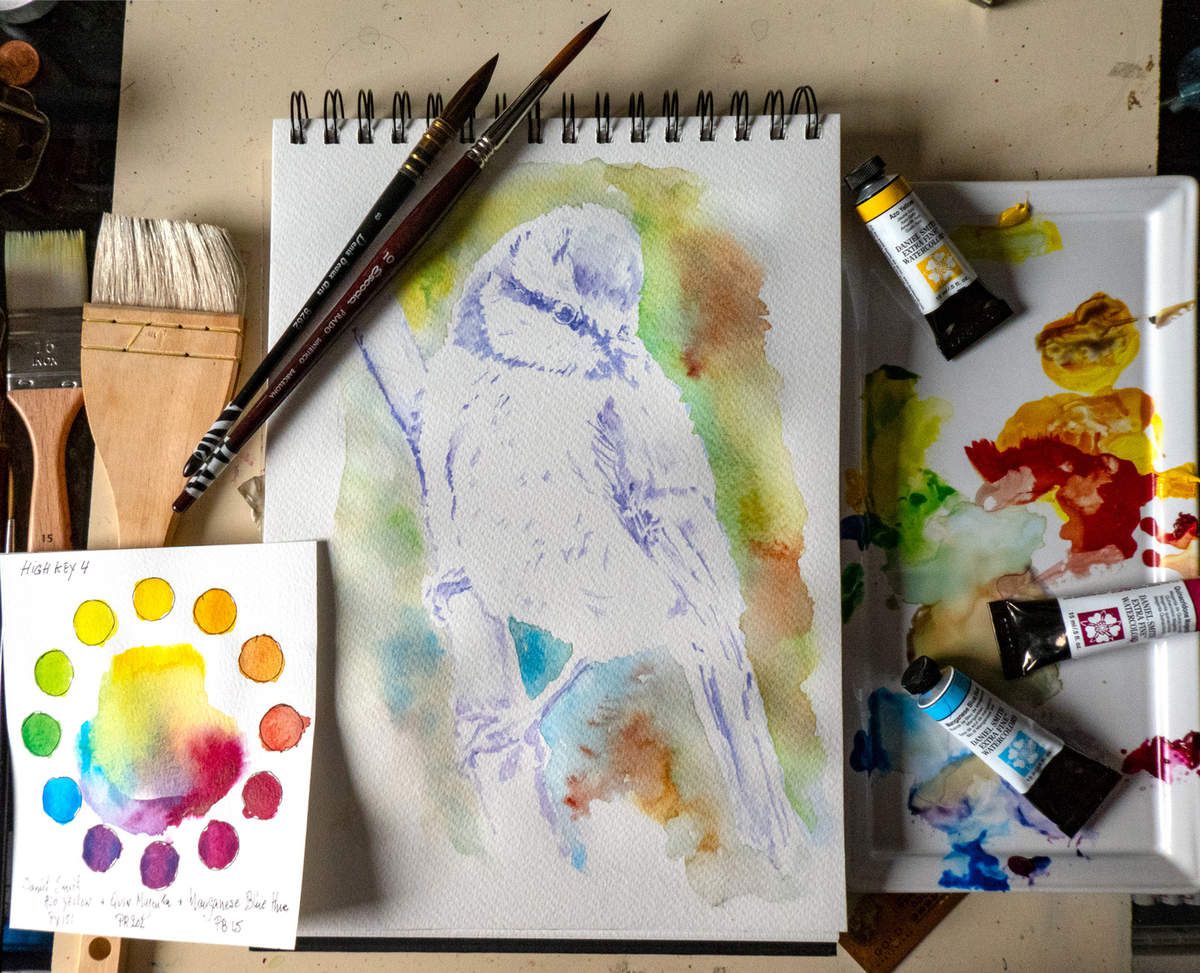
Second stage : Painting first glazes
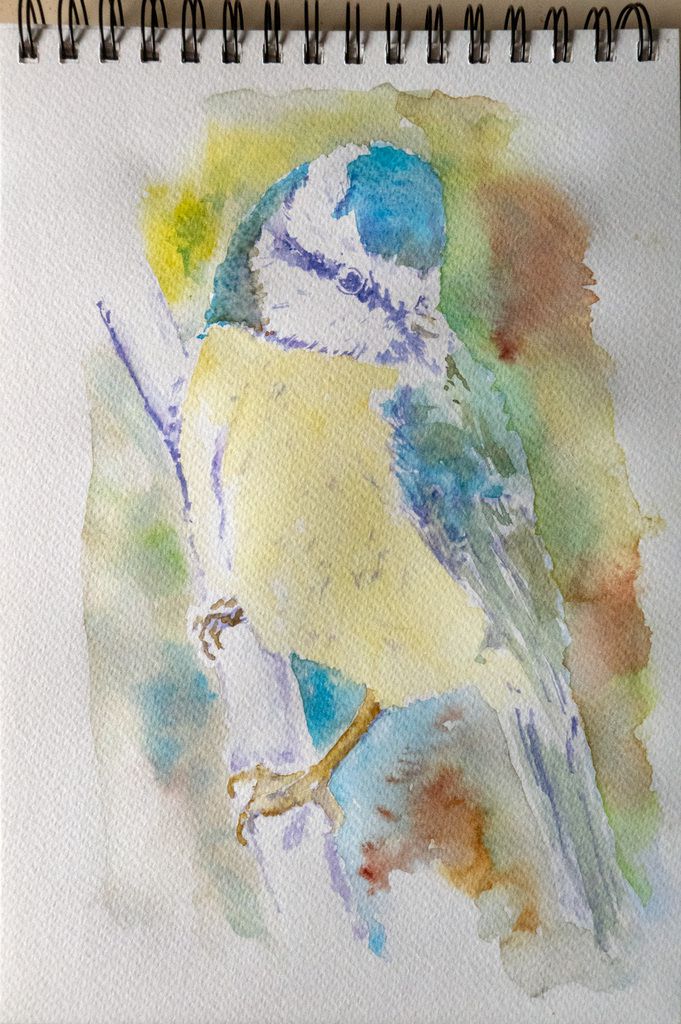
Last stage: adding details and contrasting
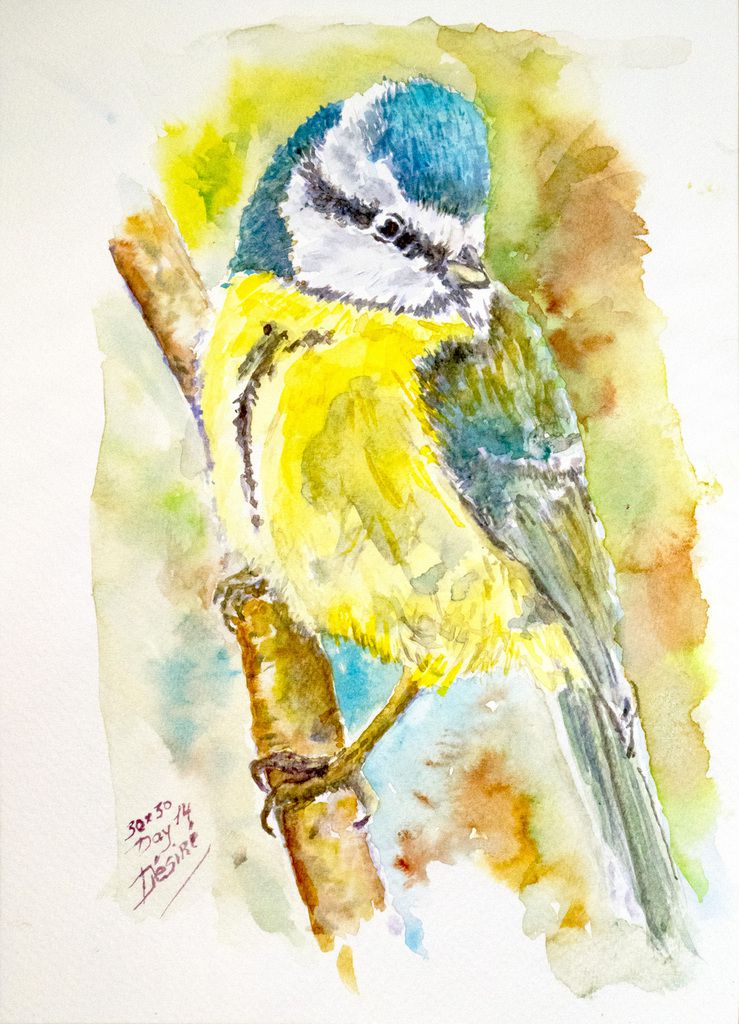
Tomorrow, I enter the dark, finished bright colors, bright and welcome shadows and heat.
If you want to see my achievements day-to-day but not commented, visit my facebook page https://www.facebook.com/dezire.herman or the page of my Facebook group All about watercolour, tests, brands, techniques (ask to join because it is a closed group) on which I give more explanations ...
See you next time and do not forget the water and brushes are good.
